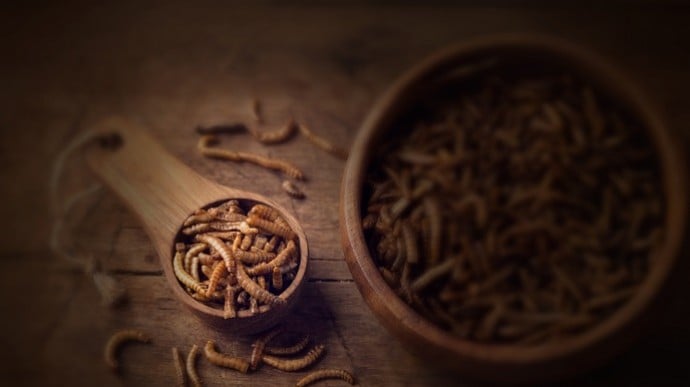Until we know more about the risks, we should try to limit our exposure to microplastics found in products and in the environment, and the toxic chemicals associated with them. This is according to Professor Halina Röllin of UP’s School of Health Systems and Public Health, who was part of a team of researchers who gathered the most up-to-date research on the effects of nano- and microplastics (NMPs) and their toxic chemicals.
Scientists are yet to understand how microplastics get into our bodies and what the risks to human health are, but what they are fairly certain about is that unborn babies could become exposed in the womb. “While babies may be exposed to NMPs before, during and after birth and in childhood, no research is yet available to clarify exactly how they affect their development,” Prof Röllin says. “Some of the research we looked at found NMPs in placenta, breast milk and in the stool of babies, even at that early stage of a child’s development.”
The studies showed that the high levels of plastic particles found in baby stool matched or even surpassed that of adults who had been exposed to plastic pollution their entire lives. “This suggests that infants are exposed to higher levels of NMPs than adults,” Prof Röllin says.
Tiny plastic particles permeate our environment, from the air we breathe outdoors to the dust we live with inside our homes. These particles are also in plastic toys and plastic food packaging. Prof Röllin says that it is almost impossible to avoid exposure as plastic particles have been recently found in human blood, which makes the lack of research into how these substances affect us even more concerning.
Prof Röllin and her colleagues found that scientists still don’t know how these microplastics make their way into the placenta and breast milk, but they suspect that it might be from the mother’s hygiene and cosmetic products, diet (like seafood) or simply the air she breathes.
The troubling conclusion they drew after reviewing 37 research papers, is that while levels of exposure to NMPs and the toxic chemicals they carry are well documented, the health effects are not. This uncertainty compels researchers to speculate on the possible health risks to children based on other known effects of these particles.
For example, a 1985 paper investigated spontaneous abortions among women working in the plastics industry, and a 2019 book found that plastic fibres in the air were harmful to factory workers. While researchers can’t say that the effects noticed in adults also occur in children, Prof Röllin says that policymakers should limit children’s exposure as a precaution.
One study in mice showed that polyethylene microplastics may alter the immune system and affect reproduction, while another found that pregnant mice that were exposed to polyethylene microplastics gave birth to overweight offspring. “Such alarming animal studies signal an urgent need for researchers to look more closely at how microplastics affect children,” Prof Röllin says.
Parents and caregivers can minimise exposure to microplastics by doing the following:
While parents and caregivers can take steps to reduce a family’s exposure to microplastics and their toxic chemicals, researchers say it is ultimately up to policymakers and researchers to compel industry to reduce microplastic pollution.
Prof Halina Röllin
July 20, 2022

Professor Halina Barbara Rӧllin has been a senior research fellow and professor at the University of Pretoria’s (UP) School of Health Systems and Public Health since 2013. As an extraordinary professor, she has been doing collaborative research since 2008.
She completed her undergraduate studies at Adam Mickiewicz University in Poznań, Poland, where she also obtained an MSc in Chemistry.
Prof Rӧllin was employed by the South African Medical Research Council (SAMRC) between 1999 and 2013. She held the position of Chief Specialist Scientist at the SAMRC’s Environment and Health Research Unit. Prior to her employment at the SAMRC, she worked for many years at the South African National Institute for Occupational Health. At both organisations, she gained valuable research experience in occupational and environmental health.
“I knew that I could contribute in a meaningful way to UP’s drive to be a reputable research-intensive university locally and internationally,” Prof Rӧllin says. “Through my long-standing involvement in multinational and multidisciplinary research projects, I initiated collaborations between UP and other research institutions abroad, such as the University of Tromsø in Norway, the Norwegian University of Science and Technology and the State University of São Paulo in Brazil.”
Her research activities encompass studies on occupational and environmental exposure to toxic substances, and their effects on health. Her occupational studies have contributed to a better understanding of exposure in the workplace and has led to improved protection of the health of workers.
The global environmental studies that the professor is involved in addresses exposure to persistent toxic substances (PTS) in the living environment and its impact on reproductive health. She has placed particular focus on prenatal exposure to selected PTSs (such as aluminium, arsenic, manganese, lead and insecticides), and tracks birth outcomes in various geographical regions including South Africa. The findings of these studies contribute to new global knowledge about the long-term impact of environmental exposures to toxicants, a fast-developing field.
Over the years, Prof Rӧllin has been the principal investigator (PI) on many research projects focused on occupational and environmental health. “I am the South African PI within the Arctic Monitoring and Assessment Programme (AMAP),” she says. “Since its establishment in 1991, AMAP has produced a series of high-quality reports and related communication products that detail the status of the Arctic with respect to climate and pollution issues and include policy-relevant, science-based advice for the Arctic Council and governments. I am also a project advisor to AMAP studies that are being undertaken in the southern hemisphere, for example, in Malawi.”
As far as cross-faculty research goes, Prof Rӧllin is involved in collaborative research with several international institutions, such as the Norwegian University of Science and Technology, the Arctic University of Norway and the University of Malawi’s College of Medicine, among others.
She has supervised and co-supervised PhD candidates in South Africa, Brazil, Norway and Malawi, among other countries, and has published several research papers in high-impact scientific journals. “Recently, I co-authored a paper titled ‘A children’s health perspective on nano- and microplastics’, which was published in the highly rated Environmental Health Perspectives journal. This paper has generated much interest globally and in SA.”
Prof Rӧllin has also accepted an invitation to serve as a guest editor of a special issue for the International Journal of Environmental Research and Public Health, the title of which is Prenatal Exposure to Environmental Pollutants and Other Stressors: Impacts on Fetal Development, Birth Outcomes, Children’s Health and Beyond.
Another recent highlight was being invited to prepare an application to the EU Horizon 2020 call for funding within the European Marie Sklodowska-Curie Action Doctoral Network with other international institutions. If successful, the project will offer extensive avenues for capacity-building in research and innovation, as well as training opportunities for PhD candidates within the consortium and at UP.
Through her long-standing and well-established scientific interests and research, Prof Rӧllin has met many knowledgeable, dedicated scientists and recognised experts, many of whom she says she tries to emulate. While there are many academic role models, she believes it is important to create one’s own outlook and informed interpretation of research findings, all while staying within the stipulated scientific boundaries. “It is also imperative that research findings be translated into practical application to benefit society.”
Her research matters, she says, because her current collaborative and interdisciplinary research into the impact of the living environment on reproductive health, prenatal exposures and birth outcomes contributes to new knowledge, policy development and research capacity building. “A further benefit arising from my research is the establishment of new contacts as collaborators, as well as the strengthening of existing research partnerships, at both national and international levels.”
She hopes that her scientific contributions to new knowledge will be recognised for some time to come, and inspire new generations of enquiring minds. For school learners or undergraduates who are interested in her field she has the following advice: “To achieve your goals, you need to continuously acquire new knowledge in your field of interest, be competitive and dedicated, learn from worthy mentors and role models, and never give up on your dreams.”
Her hobbies and interests include travelling, art, painting, reading, fashion design, listening to classical music and gardening.
 Story
Story
Cricket à la king? How about a yellow mealworm burger? Foods that may previously have evoked a ‘yuck’ response are now firmly on the menu. Research into edible insects by the Department of Zoology and Entomology at the University of Pretoria (UP) is exploring how to rear and harvest this food of the future.
 Story
Story
A single query to ChatGPT uses as much electricity as burning a light bulb for about 20 minutes. Multiply that by the millions of requests that this artificial intelligence (AI) chatbot receives each day, and the environmental impact is ominous.
 Story
Story
University of Pretoria (UP) researchers have found that the antioxidant content of certain types of tea can be likened to that found in recommended portions of fruit and vegetables.
Copyright © University of Pretoria 2025. All rights reserved.
Get Social With Us
Download the UP Mobile App